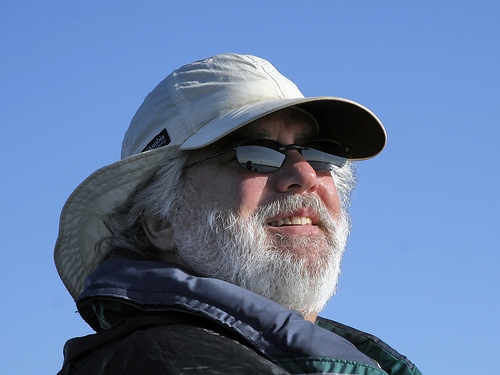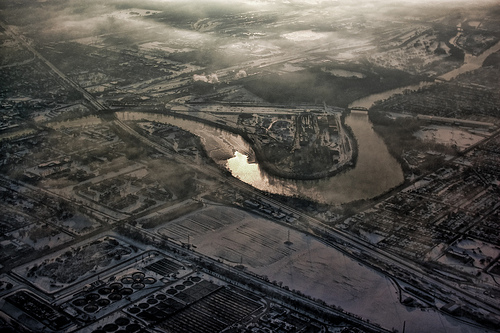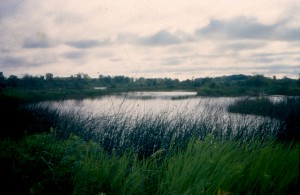 Grand Calumet River near Gary AirportLeslie DorworthThe first time I saw the Grand Calumet River, I was driving down the Indiana Toll Road. It was 1996, and I had just arrived in northwest Indiana from North Carolina to take a new job as an aquatic ecology extension specialist with the Illinois-Indiana Sea Grant Program.
Grand Calumet River near Gary AirportLeslie DorworthThe first time I saw the Grand Calumet River, I was driving down the Indiana Toll Road. It was 1996, and I had just arrived in northwest Indiana from North Carolina to take a new job as an aquatic ecology extension specialist with the Illinois-Indiana Sea Grant Program.
All around me I could see steel mills and processing plants, and the Grand Calumet, meandering slowly through this highly industrialized landscape like a rare natural jewel. There were herons, egrets, and other birds wading along the banks, and abundant, luscious greenery such as cattails and phragmites (reeds), a common invasive species across the country. Since that day, I have had a chance to canoe portions of the Grand Calumet. From the water, I got a better view of wading birds and ducks diving in the river. Sadly, from up close I could also see that the ducks resurfaced with a layer of oil on their faces and necks.
In a canoe, you also notice something else that so many urban rivers have in common: the extent to which the river’s natural course has been manipulated by humans over the years. The Grand Calumet is frequently diverted through culverts, impassable by boat. When we came to a culvert, we would have to portage the area (pick up our canoes and carry them around) before continuing on our travels along the river.
As an aquatic ecologist, I study the health of ecosystems like rivers, streams, and lakes. The Sea Grant program fosters research and education in the communities of south Lake Michigan. My position is located at Purdue University Calumet in Hammond, Ind., specifically so that I can participate in local water quality efforts.
Not long after I started my new job, I joined the steering committee for a local environmental group called the Grand Calumet Task Force. The group worked to improve the land, air, and water quality of the urban environment around the river. At the time I joined the task force, the director was Doreen Carey — a vibrant, enthusiastic, and energetic river advocate. She still has that same energy for the Grand Calumet, even after all these years. From my perspective, an important goal for the task force was to spread Doreen’s attitude throughout northwest Indiana, to get the surrounding communities to turn back to the river, and recognize its potential beauty and recreational opportunities, as well as its economic value to the Calumet region.
A person can live in northwest Indiana and not even know the river is flowing through their community. It’s not a place where people go swimming, or fishing, or even picnicking. This lack of awareness presents a great challenge for those of us working to restore the river.
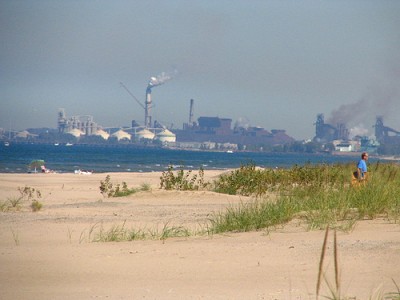 The dune and swale topography of Gary, Ind., where the Calumet River originates.Photo: leah the librarian via FlickrBefore industrialization and urbanization of the area, the Grand Calumet River supported highly diverse, globally distinctive fish and wildlife communities. The area has a unique dune and swale topography and associated rare plant and animal species, such as Franklin’s ground squirrel, Blanding’s turtle, the glass lizard, and the black crowned night heron, among others.
The dune and swale topography of Gary, Ind., where the Calumet River originates.Photo: leah the librarian via FlickrBefore industrialization and urbanization of the area, the Grand Calumet River supported highly diverse, globally distinctive fish and wildlife communities. The area has a unique dune and swale topography and associated rare plant and animal species, such as Franklin’s ground squirrel, Blanding’s turtle, the glass lizard, and the black crowned night heron, among others.
All of us on the Grand Calumet Task Force recognized that the river would probably never return to its original pristine state. However, we believed that the river could be restored to a level where people could enjoy it recreationally, and where wildlife would return. There has been progress towards that goal.
Tougher pollution laws have helped clean up the water that is discharged into the Grand Calumet. The problem of contaminated sediments — toxic mud at the bottom of the river, polluted over the past 100 years of industrial activity — remains. The removal of contaminated sediments will complement ongoing restoration efforts in northwest Indiana. The good news is that the removal process has already started. U.S. Steel in Gary has finished dredging a five-mile stretch of the river near its plant. State and federal officials are overseeing a second dredging project that is currently underway in Hammond.
My first public meeting about the U.S. Steel dredging project was a bit contentious. Representatives from the steel company, the U.S. Environmental Protection Agency, and IDEM (the Indiana Department of Environmental Management) addressed an audience that included Gary residents as well as representatives from some environmental organizations and the media. The citizens were frustrated with U.S. Steel and its past and current handling of the contaminants in the river. When one person insisted that U.S. Steel apologize to the city of Gary, the room went quiet. The U.S. Steel representative was taken aback by the demand. The EPA official present stepped in to help defuse the situation, but the mood remained tense.
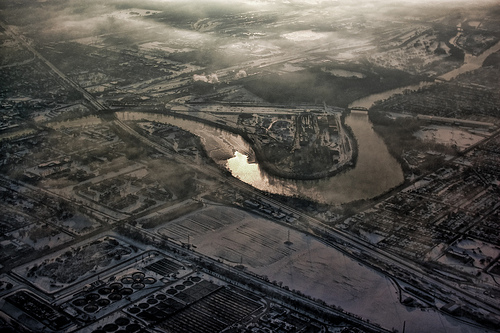 The Calumet River winds through south Chicago before emptying into Lake Michigan.Photo: duna12 via FlickrThe people of Gary were also concerned that dredged sediments would be stored in their city, possibly in an undisclosed location, and they were very vocal in their “not in my backyard” stance.
The Calumet River winds through south Chicago before emptying into Lake Michigan.Photo: duna12 via FlickrThe people of Gary were also concerned that dredged sediments would be stored in their city, possibly in an undisclosed location, and they were very vocal in their “not in my backyard” stance.
Over time, I attended several other public meetings about the dredging project. Most were much less contentious; people generally agreed that dredging needed to occur. Reflecting on these meetings several years later, I believe that the project leaders listened to the concerns of the people of Gary and addressed those concerns at the meetings in a forthright way.
In the end, U.S. Steel stored the dredged sediments in a landfill-type facility located on the company’s own property. U.S. Steel and federal and state representatives described how the storage facility would function, noting that computers would monitor the facility for leaks.
Taking part in the visioning process was exciting. The plan that the task force steering committee developed has provided some guidance on future restoration activities for the Grand Calumet. The rest of the river still needs to be dredged, and it will take many more years to safely remove all the contaninated sediments. But once it’s done, the cleanup will only enhance the quality of life for the residents of northwest Indiana by making the Grand Calumet River an inviting recreational waterway, and an environment that encourages the return of the region’s native animals and plants.
